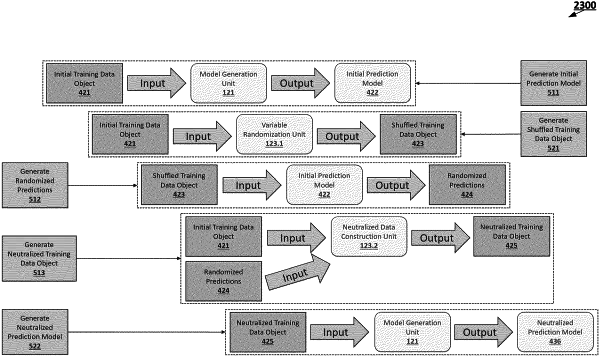| CPC G06N 5/02 (2013.01) [G06N 20/00 (2019.01)] | 20 Claims |

|
1. A computer-implemented method for generating a neutralized prediction model, the computer-implemented method comprising:
generating, by one or more processors, an initial prediction model by training the initial prediction model with an initial training data object, wherein the initial training data object comprises, for each training predictive entity of one or more training predictive entities, one or more control predictor variables, one or more predictor variables, and one or more response variables;
generating, by the one or more processors, a shuffled training data object with a randomized shuffling of the initial training data object, wherein the randomized shuffling of the initial training data object comprises assigning each control predictor variable of the one or more control predictor variables for a first training predictive entity of the one or more training predictive entities to a second training predictive entity of the one or more training predictive entities;
generating, via the one or more processors and for each training predictive entity of the one or more training predictive entities, a randomized prediction with the initial prediction model based at least on the shuffled training data object;
generating, by the one or more processors, a neutralized training data object with a neutralization of the initial training data object, wherein the neutralization of the initial training data object comprises removing each control predictor variable of the one or more control predictor variables for a training predictive entity of the one or more training predictive entities from the initial training data object; and
generating, by the one or more processors, the neutralized prediction model based at least in part on the neutralized training data object and each randomized prediction for each training predictive entity of the one or more training predictive entities.
|